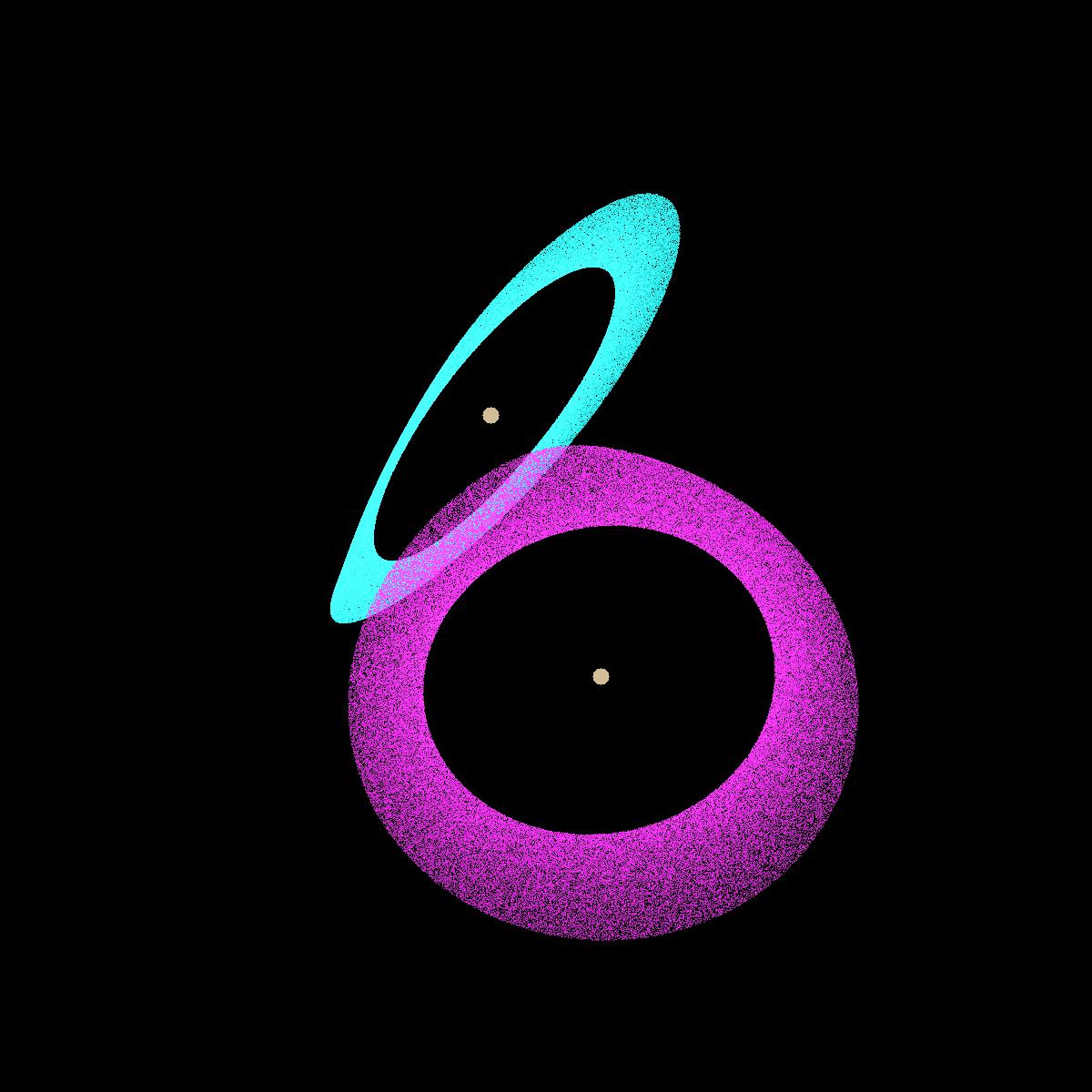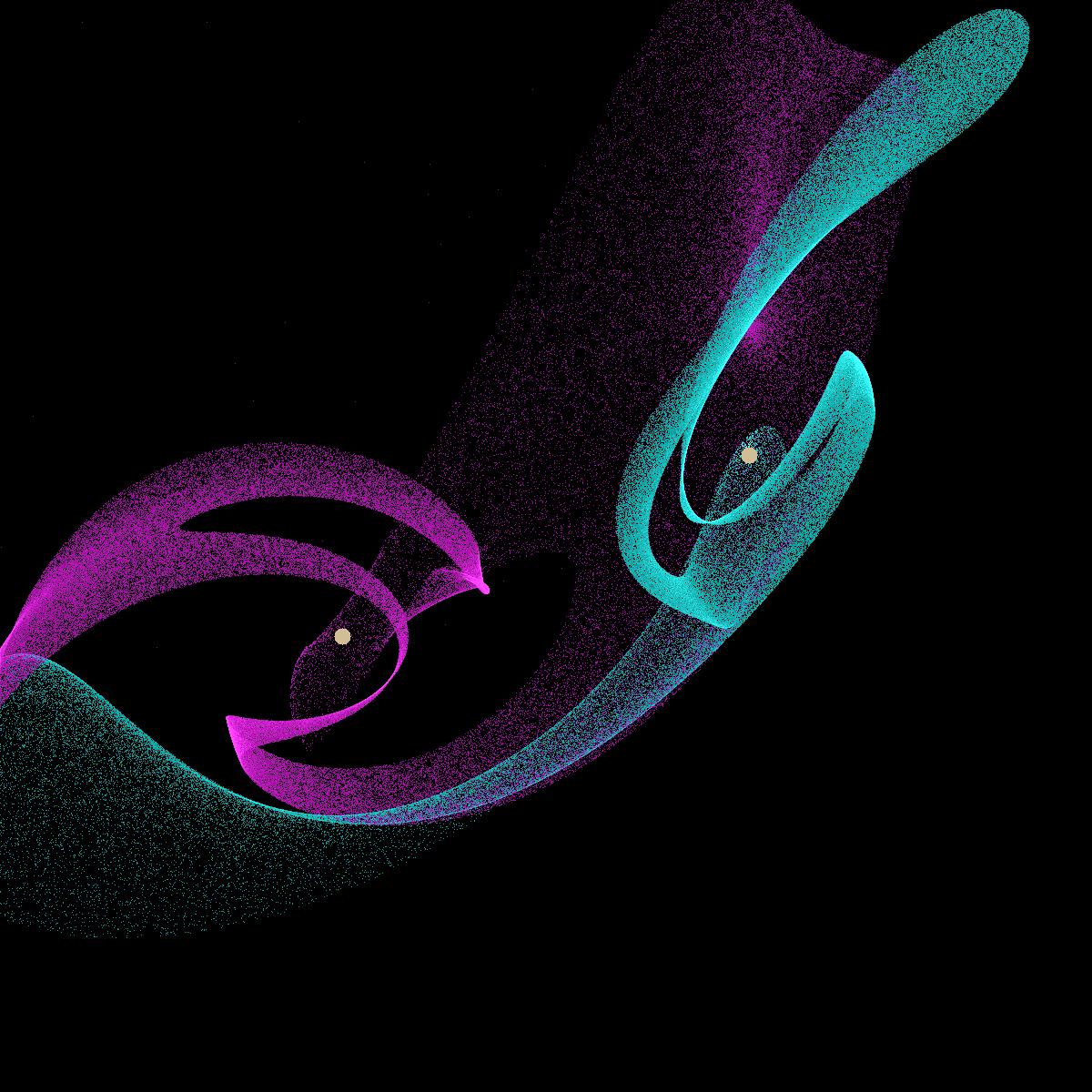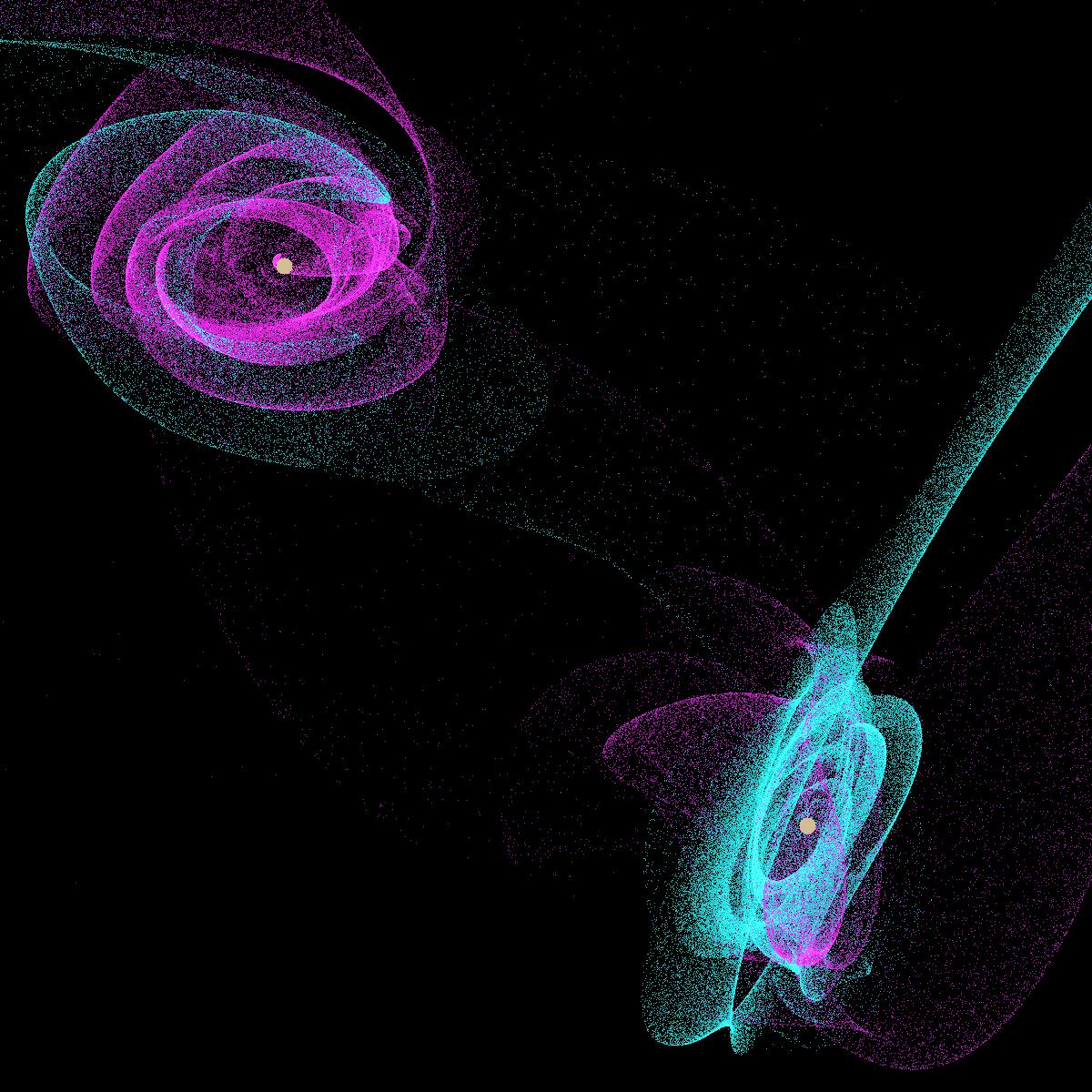SEDNA COMPUTER SIMULATIONS
Background
The image to the left shows the first frame of our animation. The bright yellow dots indicate the positions of two solar-type stars. Each star is surrounded by a swarm of planets orbiting at distances of 30-80 AU from the star. We have colored one set of planets cyan and the other set magenta.
This animation sequence follows the evolution of 20,000 planets in orbit around the two stars. To learn how the planets respond to different orientations of the flyby, we made many tests with simulations consisting of 1000-2000 particles. We investigated the distance of closest approach between the two stars, the angle of the trajectory relative to the plane of the planetary orbits, and the angle of the orbital planes of the two planetary system to derive the best orientation.
Our simulations were made on personal workstations and supercomputers at the Jet Propulsion Laboratory.
In this sequence, we start with all of the planets in circular orbits around their parent star. The orbits of the magenta-colored planets are viewed from above, so this swarm looks like a circular ring. The swarm of cyan-colored planets is viewed from the size, so the orbits look like ovals. Viewed from another orientation, the cyan swarm would look circular and the magenta swarm would look like an oval.
All of the planets orbit their parent star in the same orbital plane. You can get an idea of the geometry from the rings of Saturn. When we can see Saturn's rings edge-on, they are almost invisible! Viewed edge-on, the ring of planets orbiting each star in our simulation would also be barely visible.
At the start of the animation, each swarm of planets feels only the gravity from its parent star. The other star is too far away to feel the pull from its gravity. But, as the two stars move closer together, the pull of gravity from the other star increases. When the magenta swarm passes over the cyan swarm, each swarm begins to feel the gravity from the other star. The extra pull of gravity from the passing star distorts the nice, circular pattern of the original orbits.
As the animation continues, planets at the inner edge of the swarm continue to move in roughly circular orbits around their parent star. Farther out, the orbits become more and more distorted.
In some places, the gravity from the two stars compresses the orbits. Bright rings form where planets are pushed into orbits that are closer together.
In other places, the gravity of the passing star overwhelms the gravity of the parent star, pulling the planet away. The passing star captures a few of these planets. Sometimes, though, the gravity of the parent star is just strong enough to keep the planet. These planets end up on highly elongated orbits.
During the encounter, each star feels the pull of gravity from the other star. This pull changes the path of each star relative to the other. The shape of this path looks like a parabola.
After the encounter, the orbits of the planets look much different! A mixture of magenta and cyan planets orbits each star. The magenta and cyan planets lie in distinct rings and bands. Over time, gravity from other planets in the solar-system, like Neptune, will smooth out the bands. However, the highly elongated orbits will remain.
In our solar system, Sedna and 2000 CR105 have highly elongated orbits similar to the outermost cyan and magenta planets at the end of the animation. These are the only two known planets with orbits similar to the most highly elongated orbits produced in our calculations. Ongoing surveys with large optical telescopes will probably find more objects with orbits like Sedna and 2000 CR105.
Although the orbits of the cyan and magenta planets looked all mixed up, it is possible to distinguish between them. Indigenous, home-grown planets on highly elongated orbits tend to lie close to the original orbital plane. The captured planets follow orbits that are highly inclined to the orbital orbital plane, 40° or more.
Observations of our solar system could test whether our Sun has captured any planets. If we find planets with orbital inclinations of more than 40°, it is almost certain that these are extrasolar planets formed in another solar system.




